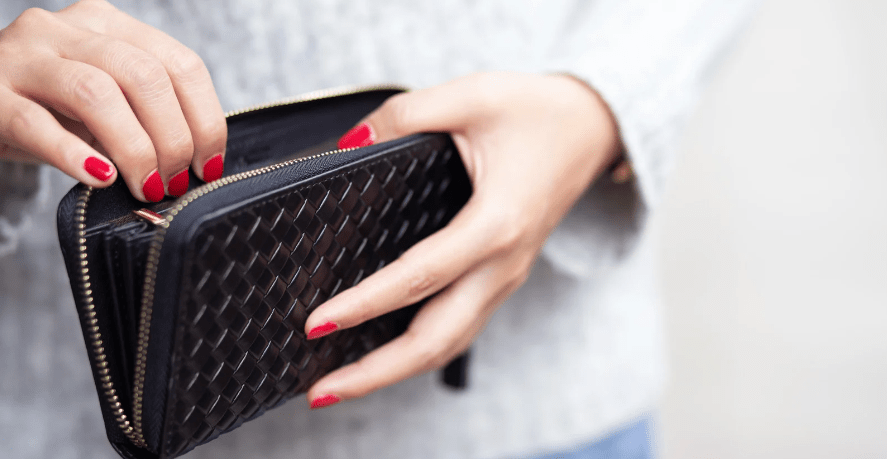How to Avoid Emotional Spending

Have you ever had a bad day and made yourself feel better by buying something? That’s one example of emotional spending. But just as there are many emotions, there are as many reasons we buy things we don’t need. Emotional spending can drain your savings.
These purchases are also known as impulse buys, where we pay for something we don’t need, but want for some reason. Canadians all over the country fall prey to emotional spending, forking an average of $3,720 a year to improve their moods. And it’s no wonder we’re also in a lot of debt. For every dollar we have, we owe $1.78 – a number that’s creeping higher with each passing month.
The Emotional Spending Psychology
According to Psychology Today, the root of emotional purchases is our unconscious desire to buy what will manage our current emotional state. Simply put, we want the product to elevate, maintain, or calm our current mood. Are you feeling low-key? You’re more likely to buy tea. Are you experiencing excitement? You’ll probably reach for that energy drink. Conversely, if you’re stuck with the blues, you’ll seek out what cheers you up. If we like our mood, we gravitate towards what will keep us feeling this way; if we’re uncomfortable with the emotion, we shop for what will change it.
It all sounds simple: being aware of our “why” behind every purchase. Yet, it isn’t easy to make the unconscious, conscious, especially in the thrill of the emotional moment. Plus, not all of us are aware of what we’re feeling, exactly when we’re feeling it.
While we may not be able to control our unconscious emotions, what we can do to bring them to our awareness is to get curious about them. To answer the “why” of each purchase starts with learning more about how your values and personality impact your spending decisions. Next time you’re shopping and you pick up an item off the shelf, stop and ask yourself a few questions:
- What about this product do I like? Is it the quality, the brand, the colours, or the design? Is it the message on the package? Is it the price?
- What will this product make me feel? Happy or encouraged?
- What would happen if I didn’t (or did) buy this product?
Another way to improve your emotional awareness is to know your triggers.
Signs of Emotional Spending
While some purchases fulfill genuine needs, emotional spending involves using money to cope with positive and negative emotions. But how can you tell if you’re shopping based on feelings rather than reason? Here are some common signs of emotional spending to watch out for:
- You frequently buy things on a whim, exceeding your budget with impulse purchases.
- You turn to shopping for retail therapy when you’re feeling down.
- Making a purchase leaves you with regret or guilt.
- You hide your shopping habits from loved ones due to shame or fear.
- You are chasing the latest trends, even if they strain your finances.
- You need to pay more attention to your budget for unnecessary purchases.
- You are relying heavily on credit cards to finance your shopping sprees.
- Prioritizing unnecessary items over groceries, bills, or repairs.
- Struggling to resist buying things you know you shouldn’t.
Common Triggers for Emotional Spending
Triggers are defined as events, situations, words, smells—really, any stimulus—that can set off strong positive or negative emotions. Triggers for emotional spending are stimuli that result in us buying something that we think will either enhance or decrease the impact of the stimulus.
There are certain emotions that more commonly result in purchases, according to The Journal of Financial Planning. They are:
- Feeling Depressed (triggers you to buy happiness)
- Feeling Stressed (triggers you to buy relief)
- Feeling Unattractive (triggers you to buy beauty)
- Feeling Guilty (triggers you to buy redemption)
- Feeling Bored (triggers you to buy entertainment)
While it helps to determine the source of these emotions—like whether watching reality TV is impacting your unhappiness with what you don’t have—sometimes it’s very confusing what, exactly, is making us feel a certain way. However, this additional complexity isn’t necessary to understand when you’re triggered. Focusing on knowing your triggers is enough to help you become aware that you are, indeed, emotionally spending.
Here are just a few examples from the Huffington Post about what we commonly buy depending on what we feel:
- Feeling powerful: Spending on yourself (treatments, experiences).
- Feeling weak: Spending on others (gifts, favours).
- Feeling excited: Impulse purchases (unplanned items).
- Feeling envious: Competitive spending (expensive items to outdo others).
- Feeling flirty: Buying attractive clothing/underwear.
- Feeling sad: Opting for more expensive choices.
- Feeling claustrophobic: Choosing loud, bold, or unique items.
How to Stop Emotional Spending
The urge to swipe your card after a bad day or celebrate the good news with a shopping spree is real. But emotional spending can negatively affect your finances. Here are some effective strategies on how to stop emotional spending to help you regain control of your finances:
Recognize Your Triggers
Do you impulse buy when you’re feeling down? Are you a stress shopper? A boredom buyer? Identifying your triggers is the first step to outsmarting emotional spending. Track not just your purchases but also your mood. Eventually, you’ll discover the connections between your mood and spending habits.
Create a Budget
Allocate funds for necessities like bills and groceries, set aside savings for the future, and factor in a reasonable amount for discretionary spending. This way, you’ll always have a clear picture of where your money is going, making impulsive purchases less likely.
Set Financial Goals
Having a clear financial target injects purpose into your spending. Do you dream of a new home, a luxurious vacation, or a secure future? Visualize that goal and use it as motivation to stick to your financial plan. You’re a step closer to achieving your dreams.
Find Healthier Emotional Outlets
Is shopping your go-to method for dealing with stress, boredom, or excitement? It’s time to explore healthier coping mechanisms. Exercise, meditation, spending quality time with loved ones, or pursuing a hobby can all provide a natural mood boost without draining your wallet.
Implement a Cooling-Off Period
Have you ever felt the urge to do something you don’t need? Don’t do it just yet! Instead, implement a “cooling-off period.” Give yourself a day or two to decide if it’s a wise purchase. Often, you’ll be glad you didn’t make a hasty decision.
Use a Debit Card or Cash
Swiping your credit card makes it easy to lose track of spending. Instead, use a debit card or cash for everyday purchases. The physical act of handing over cash makes spending more tangible and helps you stay within your budget. It’s a simple trick, but it can be surprisingly effective in preventing emotional spending.
Speedy Cash is Your Financial Partner
Financial literacy is key. We aim to help you avoid financial pitfalls, including using payday loans for impulsive purchases. However, we understand that emergencies happen. Speedy Cash is your last resort if you’re facing an unexpected financial hurdle and have exhausted all other options.
Speedy Cash supports you on that journey, offering financial education resources and promoting responsible borrowing practices, not just payday loans. Financial knowledge is the first step towards economic empowerment, and we’re here to be a resource on that journey.
Taking control over your emotional spending simply starts by asking yourself a few questions before purchasing something and being aware of your mood while shopping. Once you bring these emotions to your awareness, you may have a much easier time walking away from certain purchases or even choosing a less expensive alternative.
For more topics on improving your financial situation and how to save money, check out the Speedy Cash blog now!

